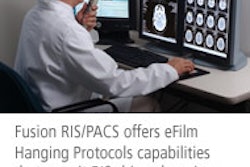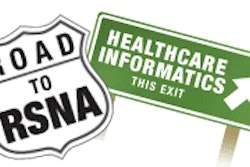CHICAGO - It's a nagging approach that also plays on the competitive instincts of radiologists: Administrators at one academic medical center cut their report-signature delays in half with automated e-mail reminders.
The average time that transcribed reports were awaiting the radiologist's signature went from 22.6 hours in the first six months of the program to 11.4 hours in the period 18 months later, according to Dr. Lynn Broderick, vice chair of radiology at the University of Wisconsin Hospital in Madison.
Broderick described her department's experience in a scientific session Tuesday at the 90th annual RSNA meeting.
The department instituted their system while still using a taped-dictation system, in preparation for transition to a voice-recognition system, Broderick said. The radiology operations committee also set a goal of having at least 60% of all reports signed within 48 hours.
All of the department's radiologists received automated e-mails at around 7 a.m. and 4:30 p.m. each day, telling them how many reports were electronically accessible in their signature queue, and advising them of their average turnaround time on signing of reports for the past seven days.
They also received monthly reports ranking the department's 33 to 36 radiologists from best to worst on their turnaround times.
Not all of this communication was welcomed, Broderick noted in response to a question from the audience.
"I have the luxury of having a group of radiologist that don't require me to survey because they give me their feedback, and I can tell you that there were some people who were annoyed by the e-mails," she said.
The department made simultaneous "aggressive" efforts to reduce transcription turnaround times, Broderick said, because a longer signature delay seemed to follow a longer transcription delay.
A new voice-recognition dictation system may enable radiologists to avoid the e-mail reminders, Broderick said, because radiologists who choose to edit their own reports can then sign them immediately.
On the other hand, radiologists who choose to use the department's former transcriptionists to edit their reports will probably continue to receive signature reminders, she said.
She also noted that improvements in report turnaround provide benefits for both medical services and financial performance.
"The signed final report is critical for accurate and timely patient care, and the professional billing cycle begins with the report signature," Broderick stated.
"Radiology is truly an information business, and the product that we provide is the information we glean from the images, and then provide to our referring physicians or providers in the form of a signed report."
By Tracie L.
Thompson
AuntMinnie.com staff writer
December 1, 2004
Related Reading
Optimizing alternative reporting strategies, July 16, 2004
Speech recognition hits the mark, thanks to editors, June 8, 2004
SR evangelist touts technology's benefits, drawbacks, May 21, 2004
Imaging reports also benefit from improved signal-to-noise ratio, May 3, 2004
Electronic signatures trim turnaround times, January 29, 2004
Copyright © 2004 AuntMinnie.com



















